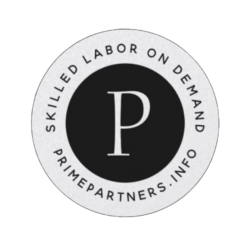Fire Suppression Systems Technician Interview Questions and Answers
Fire Suppression Systems Technician Interview Preparation Guide
Overview of Certifications, Education, and Industry Qualifications
Required and Recommended Certifications
- NICET Certification: The National Institute for Certification in Engineering Technologies offers certifications for Fire Alarm Systems and Special Hazards Systems. A NICET Level II or III certification is often required for advanced positions.
- NFPA Training: Familiarity with the National Fire Protection Association (NFPA) standards is crucial. Certifications in specific NFPA codes (e.g., NFPA 13 for sprinkler systems) can be advantageous.
- OSHA Safety Training: Occupational Safety and Health Administration (OSHA) certification ensures that technicians understand workplace safety and compliance standards.
Educational Background
- Associate Degree in Fire Science or Related Field: This provides foundational knowledge in fire prevention, fire behavior, and system design.
- Vocational Training or Apprenticeship: Practical experience through apprenticeships can be invaluable for hands-on knowledge of system installations and maintenance.
Industry Qualifications
- Experience with Specific Systems: Experience with different types of suppression systems (e.g., wet/dry sprinklers, foam systems, gaseous suppression) is often crucial.
- Understanding of Building Codes: Familiarity with local building and fire codes is essential for compliance and effective system design.
Interview Questions and Answers
Technical Questions
Question 1: Describe the main differences between wet and dry pipe sprinkler systems.
- Answer:
- Wet Pipe Systems: These are the most common type of sprinkler systems. The pipes are constantly filled with water, and the system is activated when heat opens a sprinkler head, allowing water to flow out immediately.
- Example: In a commercial office building, a wet pipe system is effective because the environment is heated, preventing the pipes from freezing.
- Advantages: Immediate response time, simpler design, and lower maintenance.
- Disadvantages: Risk of freezing in unheated spaces.
- Dry Pipe Systems: These systems use pressurized air or nitrogen to fill the pipes, with water held back by a valve. When a sprinkler head is triggered, the air is released, opening the valve and allowing water to flow in.
- Example: In a warehouse located in a cold climate, a dry pipe system prevents freezing issues.
- Advantages: Suitable for unheated environments.
- Disadvantages: Slight delay in water delivery, more complex and costly maintenance.
- Follow-up Point: Discuss scenarios where a pre-action system might be more appropriate, such as in data centers where accidental water damage must be prevented.
- Wet Pipe Systems: These are the most common type of sprinkler systems. The pipes are constantly filled with water, and the system is activated when heat opens a sprinkler head, allowing water to flow out immediately.
Question 2: How do you conduct a hydrostatic test on a fire suppression system?
- Answer:
- Preparation: Ensure all system components are properly installed and all valves are closed.
- Procedure:
- Fill the System: Slowly fill the system with water to remove air pockets.
- Pressurize: Increase pressure gradually to the specified test pressure, typically 200 psi or 50 psi above the maximum system pressure.
- Monitor: Maintain the pressure for a minimum of two hours. Check for leaks or drops in pressure.
- Inspect: Visually inspect all joints and connections.
- Real-World Scenario: During a test in a high-rise building, a drop in pressure was detected. Upon inspection, a faulty valve was replaced, resolving the issue.
- Best Practices: Use calibrated pressure gauges and ensure all personnel are trained in emergency procedures.
- Common Pitfalls: Failing to remove all air from the system can cause false readings. Avoid increasing pressure too quickly, which could damage components.
- Follow-up Point: Discuss the importance of documentation and the steps taken to rectify any issues found during testing.
Behavioral Questions
Question 3: Describe a time you had to work under pressure to complete a project on time. How did you handle it?
- Answer:
- Context: While working on a retrofitting project for a hospital, a critical deadline was moved up due to an upcoming safety inspection.
- Action: Prioritized tasks, coordinated with team members to work in shifts, and communicated regularly with the client to manage expectations.
- Outcome: Completed the project two days ahead of schedule, passing the inspection with no issues.
- Reasoning: Prioritizing tasks based on urgency and potential impact ensured that critical components were addressed first.
- Alternative Considerations: If additional resources were unavailable, I would have communicated potential delays to mitigate client concerns.
- What Not to Do: Avoid ignoring team fatigue or safety protocols in the rush to meet deadlines.
- Follow-up Point: Discuss how you ensure quality is maintained even under time constraints.
Situational Questions
Question 4: A client wants to install a fire suppression system in a historical building with minimal impact on the structure. How would you approach this?
- Answer:
- Initial Assessment: Conduct a detailed survey of the building, considering architectural constraints and preservation requirements.
- Design Proposal: Recommend a concealed piping system or a pre-action system that minimizes physical alterations.
- Collaboration: Work with preservationists to ensure compliance with historical preservation standards.
- Example: In a similar project, we used low-profile sprinkler heads and routed pipes through existing cavities, preserving the building’s aesthetics.
- Reasoning: Balancing fire safety with preservation needs requires innovative solutions and stakeholder collaboration.
- Common Pitfalls: Avoid using standard installations that might damage historical features or violate preservation laws.
- Follow-up Point: Discuss the importance of obtaining necessary permits and approvals before proceeding with installation.
Problem-Solving Questions
Question 5: How would you address a recurring issue with false alarms in a fire suppression system?
- Answer:
- Diagnosis: Analyze system logs to identify patterns or specific triggers for false alarms.
- Inspection: Conduct a thorough inspection of detectors and control panels to identify faulty components or calibration issues.
- Solution: Replace or recalibrate faulty detectors, update software, or adjust environmental factors contributing to false alarms.
- Example: A manufacturing plant experienced frequent false alarms due to dust accumulation. Installing protective covers and increasing maintenance frequency resolved the issue.
- Reasoning: Identifying root causes prevents future occurrences and ensures system reliability.
- Alternative Solutions: If environmental adjustments are insufficient, consider upgrading to more advanced detection technology.
- Common Pitfalls: Avoid overlooking environmental factors or failing to document changes made to the system.
- Follow-up Point: Discuss how you would communicate with the client to reassure them and provide long-term solutions.
Additional Considerations
- Continuous Education: Staying updated with the latest technologies and codes is crucial in this evolving field.
- Communication Skills: Emphasize the importance of clear communication with clients, team members, and inspectors.
- Safety and Compliance: Highlight the significance of adhering to safety standards and legal requirements in every aspect of the job.
This guide provides a comprehensive overview and detailed responses to potential interview questions for a Fire Suppression Systems Technician position, equipping candidates with the knowledge and confidence to succeed.
More Fire Alarm Interview Guides
Explore more interview guides for Low Voltage positions.
Fire Alarm Technician Interview Questions and Answers
This guide offers comprehensive Fire Alarm Technician interview questions and answers, designed to help job seekers p...
Fire Systems Engineer Interview Questions and Answers
This guide provides essential interview questions and answers for aspiring Fire Systems Engineers, focusing on key to...
Fire Alarm Installer Interview Help
This Fire Alarm Installer Interview Help guide equips job seekers with essential knowledge and skills to excel in int...
Fire Suppression Systems Technician Interview Questions and Answers
Discover essential insights with our Fire Suppression Systems Technician Interview Questions and Answers guide. Job s...
Fire Alarm Inspector Interview Preparation
This guide prepares job seekers for a Fire Alarm Inspector interview by covering key topics such as industry regulati...
Recent Articles
Check out more articles from Best Electrician Jobs about getting hired inthe electrical industry.
Best Job Board for Electricians
Discover the best job board for electricians! Boost your career with insights on salaries, training, and growth!
Improve Your Electrician Job Postings for More Applicants
Discover how to improve your electrician job postings for more applicants! Boost your career with insights on salarie...
What is the Highest Paying Electrician Role?
Discover the highest paying electrician roles and how to prepare for them. Learn about the skills and certifications ...
Industrial Electrician Careers in California
From manufacturing plants to data centers, industrial electricians play a vital role in California's economy. Discove...
Security Technician Interview Questions and Answers
Security technicians are essential in protecting our modern world. Learn what to expect in your Security Technician i...
Featured Jobs
-

- Company
- Prime Partners
- Title and Location
- Cable Technician
- Wyoming, MI
- Employment Type
- FULL_TIME
- Salary
- $25.16-$32.59/HOUR
- Team and Date
- Commercial
- Posted: 04/17/2025
-

- Company
- Prime Partners
- Title and Location
- Apprentice Electrician
- San Diego, CA
- Employment Type
- FULL_TIME
- Salary
- $24-$37/HOUR
- Team and Date
- Commercial
- Posted: 04/17/2025
-

- Company
- Prime Partners
- Title and Location
- Security Alarm Installer
- Mesa, AZ
- Employment Type
- FULL_TIME
- Salary
- $25.81-$30.68/HOUR
- Team and Date
- Commercial
- Posted: 04/17/2025
-
- Company
- Jackson Healthcare
- Title and Location
- Journeyman Electrician
- Alpharetta, GA
- Employment Type
- FULL_TIME
- Salary
- $30.6-$35.86/HOUR
- Team and Date
- Commercial
- Posted: 04/17/2025
-

- Company
- Prime Partners
- Title and Location
- Journeyman Electrician
- Gilbert, AZ
- Employment Type
- FULL_TIME
- Salary
- $40-$55/HOUR
- Team and Date
- Data Center
- Posted: 04/17/2025
-

- Company
- Prime Partners
- Title and Location
- Voice & Data Technician
- Glendale, AZ
- Employment Type
- FULL_TIME
- Salary
- $23-$35/HOUR
- Team and Date
- Commercial
- Posted: 04/17/2025
Best Electrician Jobs
Ready to get started?
Stop worring about manpower. And get back to what you do best.
Best Electrician Jobs is for Everyone
At Best Electrician Jobs, we are dedicated to fostering an inclusive environment that values diverse perspectives, ideas, and backgrounds. We strive to ensure equal employment opportunities for all applicants and employees. Our commitment is to prevent discrimination based on any protected characteristic, including race, color, ancestry, national origin, religion, creed, age, disability (mental and physical), sex, gender, sexual orientation, gender identity, gender expression, medical condition, genetic information, family care or medical leave status, marital status, domestic partner status, and military and veteran status.
We uphold all characteristics protected by US federal, state, or local laws, as well as the laws of the country or jurisdiction where you work.
 Best Electrician Jobs
Best Electrician Jobs